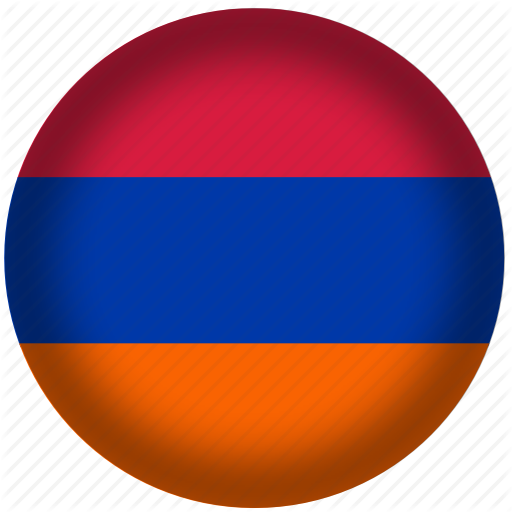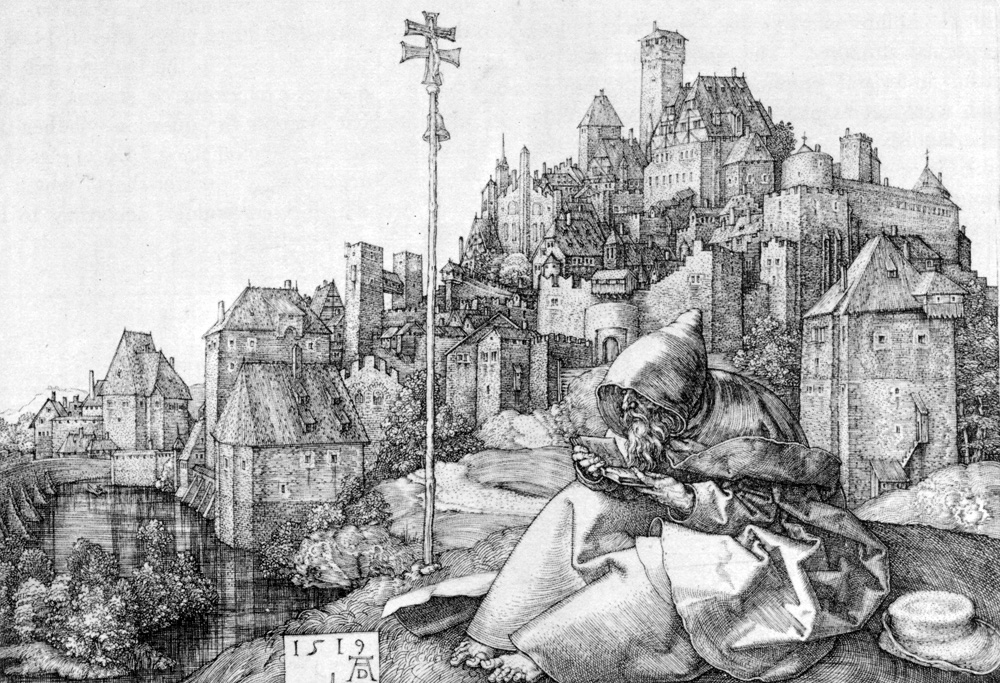DOI: https://doi.org/10.34680/urbis-2025-5(1)-24-57
The “Yerevan epic” in Russian Soviet literature of the first half of the 20th century: Andrei Bely, Marietta Shaginyan, Osip Mandelstam
Ani Petrs-Bartsumian
Yerevan State University, Yerevan, Armenia
[email protected]
ORCID: 0000-0002-2720-6522
ABSTRACT
The literature and culture of Eastern Armenia and Russia have been intertwined since the 19th century, when Eastern Armenia became part of the Russian Empire in 1828. During this period, Armenian themes became an integral aspect of Russian literature, with many writers, including Alexander Pushkin, Marietta Shaginyan, Andrei Bely, and Osip Mandelstam, drawing on Armenian motifs in their works. This study focuses on analyzing Yerevan's image in the works of these authors, comparing their perceptions of the city and its cultural significance in Russian literature, particularly within the framework of the “Armenian text.” The paper examines three travelogues on Armenia written by Marietta Shaginyan, Andrei Bely, and Osip Mandelstam, with a focus on the portrayal of Yerevan. Despite their approaches, the authors’ texts share a common theme of the city’s transformation and development. Shaginyan depicts Yerevan as a symbol of socialist progress and a center of cultural and scientific achievements. For A. Bely, the city represents a point of convergence between cultures and elements, intertwining antiquity and modernity, as well as nature and artifice. Mandelstam, in turn, emphasizes Yerevan’s historical and cultural significance, imbuing it with personal and symbolic meaning. This study highlights the diversity of interpretations of the city, reflecting the ideological and creative differences among the authors.
KEYWORDS: “Armenian text”, Image of Yerevan, Armenia, Marietta Shaginyan, Andrei Bely, Osip Mandelstam, travelogue.
References
Abramyan, L. A. (2010). Yerevan: Memory and forgetting in the organization of post-soviet urban space. Forum for Anthropology and Culture, 12, 248–271. (In Russian).
Abramyan, L. A. (2023). Zvartnots conjunct with Colosseum. From Tamanyan’s People’s House to the Theater of opera and ballet. Urbis et Orbis. Microhistory and Semiotics of the City, 3(1), 32–61. https://doi.org/10.34680/urbis-2023-3(1)-32-61 (In Russian).
Asaeva, M. M. (2009). Speech means of expression in O. E. Mandelstam’s autobiographical prose. Thesis abstract for the degree of Candidate of Philosophical Sciences. Dagestan State University. (In Russian).
Bagration-Mukhraneli, I. L. (2015). The Caucasian subtext of the dialogue of Mandel’shtam with the leader. The origins of the concept «The Kremlin mountaindweller». Siberian Journal of Philology, 1, 51–60.
Bagration-Mukhraneli, I. L. (2016). The representation of Georgia and the Caucasus in Russian literature of the XIX–early XX century. Thesis abstract for the degree of Doctor of Philology. Tver State University. (In Russian).
Bely, A. (1985). Armenia: Essay, letters, memoirs. Sovetakan grogh. (In Russian).
Beresneva, Zh. A. (2014). The symbolical world of culture in Andrey Byely’s traveling notes. Vestnik Moskovskogo gosudarstvennogo universiteta kul’tury i iskusstv, 1(57), 238–242. (In Russian).
Bitov, A. (2013). Journey from Russia: Imeria in four dimensions. Dimension III: (travel stories). Astrel’. (In Russian).
Bogacheva, E. V. (2010). Literary travel genre in M. Shaginyan’s creative work. Izvestia. Ural Federal University Journal. Series 2: Humanities and Arts, 3(79), 133–142. (In Russian).
Ebert, K. (2010). “One must be able to see”: Andrei Bely’s travelogues “The Wind from the Caucasus” and “Armenia” as an aesthetic instruction. In V.-S. Kissel & G. A. Thime (Comp.), Cursory glances: A new reading of Russian travelogues of the first third of the 20th century. (pp. 146–168). Novoe literaturnoe obozrenie. (In Russian).
Galstyan, V. A. (2019). The concept of travel and the means of its expression in O. Mandelstam’s autobiographical prose “Journey to Armenia”. In N. B. Samsonov (Ed.), Lexicology of the Russian language and the stylistics of the literary text. (pp. 179–183). Moscow State Regional University. (In Russian).
Galstyan, V. A. (2020). Ecphrasis as a verbal method of conveying cultural concepts in O. Mandelstam’s autobiographical prose “Journey to Armenia”. In O. V. Shatalova (Ed.), The Russian Language in Slavic Intercultural Communication. (pp. 48–53). Dione. (In Russian).
Golovchenko, I. F. (2017a). The literary travel in O. Mandelshtam’s essay “Sevan”: The allusions to Edgar Poe’s story “The Facts in the Case of M. Valdemar”. RUDN Journal of Studies in Literature and Journalism, 22(3), 426–432. https://doi.org/10.22363/2312-9220-2017-22-3-426-432 (In Russian).
Golovchenko, I. F. (2017b). The semantic complex of “travel” in the discourse of Acmeism (N. Gumilev, O. Mandelstam, A. Akhmatova). Thesis abstract of the dissertation for the degree of Doctor of Philology. A. S. Griboyedov Institute of International Law and Economics. (In Russian).
Golovchenko, I. F. (2017c). Formation and development of a metaphorical concept in the dialogical context of Osip Mandelstam’s “Journey to Armenia”. Modern Science Success, 3(4), 163–166. (In Russian).
Gromov–Kolli, A. (2002). Travel prose by Russian writers of the first third of the 20th century. Russian Speech, 5, 24–30. (In Russian).
Karapetian, V. (2015). Grand Hotel Yerevan. Mediapolis.
Kubat’yan, G. I. (2012). The escape to Armenia and other etudes about Mandelshtam. Voprosy literatury, 2, 65–99. (In Russian).
Mandel’shtam, N. Ya. (1987). Memories. The third book. YMCA-PRESS. (In Russian).
Mandel’shtam, N. Ya. (1989). Memoirs. Kniga. (In Russian).
Mandel’shtam, N. Ya. (1999a). Book two: On the centenary of his birth. Soglasie. (In Russian).
Mandel’shtam, O. E. (1999b). Collected works: in 4 vols. Vol. 4: Letters. Art-Biznes-Tsentr. (In Russian).
Mandel’shtam, O. E. (2010). The complete works and letters: in 3 vols. Vol. 2: Prose. Progress-Pleyada. (In Russian).
The Mandelstam Encyclopedia: in 2 vols. Vol. 1 (2017a). Politicheskaya ehntsiklopediya. (In Russian).
The Mandelstam Encyclopedia: in 2 vols. Vol. 2 (2017b). Politicheskaya ehntsiklopediya. (In Russian).
Margaryan, E. G. (2021). Urban problems of Yerevan: Thoughts about the unthinkable. Urbis et Orbis. Microhistory and Semiotics of the City, 1, 37–76. https://doi.org/10.34680/urbis-2021-1-37-76 (In Russian).
Matantseva, L. V., Savchenko, T. D., & Shchirovskaya, T. N. (2014). The phenomenon of writer’s wandering in the travel literature of the XIX–XX centuries. In Culture. Spirituality. Society. (pp. 7–14). Tsentr razvitiya nauchnogo sotrudnichestva. (In Russian).
Mets, A. G., & Akhverdyan, G. R. (2011). Notes on O. Mandelstam’s “Journey to Armenia”. In Russia and the West. (pp. 294–301). Novoe literaturnoe obozrenie. (In Russian).
Moranta, S. (2015). Osip E. Mandelstam’s prose and “Literary Anger”: notes on the “Noise of Time” and “Journey to Armenia”. In Russian Language and Literature in the Space of World Culture: in 15 vols. Vol. 14. (pp. 434–439). MAPRYAL. (In Russian).
Nerler, P. (2014). Con amore: Studies on Mandelstam. Novoe literaturnoe obozrenie. (In Russian).
Nerler, P. (2015). Journey to Armenia and Osip Mandelstam’s Journey to Armenia: an attempt at reconstruction. Znamya, 11, 123–152. (In Russian).
Nikolaeva, A. (1997). Journey to Armenia by O. E. Mandelstam. Russian speech, 6, 35–40. (In Russian).
Penkina, A. (2020). O. Mandelstam’s reference to Dante in The Fourth Prose (Chetvyortaya proza) and Journey to Armenia (Puteshestvie v Armeniyu). Voprosy literatury, 1, 231–245. https://doi.org/10.31425/0042-8795-2020-1-231-245 (In Russian).
Peters, I.-U. (2010). The eye as an “instrument of thinking”: The correlation of sensory cognition and poetic reflection in Osip Mandelstam’s “Journey to Armenia”. In V.-S. Kissel & G. A. Thime (Comp.), Cursory glances: A new reading of Russian travelogues of the first third of the 20th century. (pp. 137–145). Novoe literaturnoe obozrenie. (In Russian).
Rozental’, S. (1933). Shadows of Old Petersburg (“Zvezda”, No. 1-7 for 1933). Pravda, 239(5765), 30 August, 4. (In Russian).
Shafranskaya, E. F. (2022). Armenian text: Poetry and prose. Philological Sciences, S6, 135–143. (In Russian).
Shaginyan, M. S. (1950). Travelling through Soviet Armenia. Molodaya gvardiya. (In Russian).
Shaginyan, M. S. (1987). Collected works in 9 vols. Vol. 3: Messi-Mendes, or the Yankees in Petrograd. Vol. 3: A fairy tale novel; Hydrocentral: A novel; Essays. Khudozhestvennaya literature. (In Russian).
Shugan, O. V. (2018). Old and new Caucasus seen by A. M. Gorky (feature articles “Across the Soviet Union”). Vestnik of Kostroma State University, 24(1), 47–52. (In Russian).
Shuvaeva-Petrosyan, E. (2019). Mandelstam O. E. Armenian text (to the 80th death anniversary). Cross-Cultural Studies. Education and Science, 2, 92–99. https://doi.org/10.24411/2470-1262-2019-10052 (In Russian).
Simyan, T. S. (2019a). Musical and carnival space of Old Tiflis (by the example of Vano Khojabekyan, Vagharshak Elibekyan, Agasi Aivazyan). ΠΡΑΞΗΜΑ. Journal of Visual Semiotics, 2(20), 63–80. https://doi.org/10.23951/2312-7899-2019-2-63-80 (In Russian).
Simyan, T. S. (2019b). From biosphere to noosphere: Theory and practice. Critique and Semiotics, 1, 173–197. https://doi.org/10.25205/2307-1737-2019-1-173-197 (In Russian).
Sippl, C. (1997). Reisetexte der russischen Moderne. Andrej Belyj und Osip Mandel'stam im Kaukasus. Sagner.
Stepanyan, A. A., & Simyan, T. S. (2016). Yerevan as a semiotic text (experience of reconstruction of the “beginning” and “end” of Mashtots Avenue). Critique and Semiotics, 16, 6–16. (In Russian).
Surat, I. (2018). Two journeys: Mandelstam and Pushkin. Ural, 7, 195–215. (In Russian).
Tamanyan, A. I. (1935). Creative reports. Architecture of the USSR, 5, 3–7. (In Russian).
Tarkan, N. (2010). The topos of the city in the poetry of O. Mandelstam. In: The Russian language in the context of culture. (pp. 196–199). Mogilev State University named after A. A. Kuleshov. (In Russian).
The work of M. S. Shaginyan and her contemporaries: An actual view (2023). Southern Federal University Publ. (In Russian).
Vasilyan, V. O. (2023). The image of the city in Armenia. Anthropological perspective. Urbis et Orbis. Microhistory and Semiotics of the City, 3(1), 82–96. https://doi.org/10.34680/urbis-2023-3(1)-82-96
Vermishyan, H., & Barseghyan, L. (2022). Yerevan center urban parks and garden squares: places for people, places of meanings. Urbis et Orbis. Microhistory and Semiotics of the City, 1(2), 157–184. https://doi.org/10.34680/urbis-2022-1(2)-157-184
Zakarian, A. (1981). Sergey Gorodetski in Yerevan (April, 1919). Herald of the Social Sciences, 6, 53–64. (In Armenian).
Zakarian, A. (2018). Sergey Gorodetsky’s impressions of Yerevan (the end of April – the beginning of May, 1919). Historical-Philological Journal, 2, 56–67 (In Russian).
Zlydneva, N. V. (2010). Ecphrasis in Mandelstam’s “Journey to Armenia”: The problem of reference. In T. M. Nikolaeva (Ed.), Research in Linguistics and Semiotics. (pp. 572–579). Yazyki slavyanskikh kul'tur. (In Russian).
Information about the author
Ani Petrs-Bartsumian
PhD (Philology)
The Chair of History and Literary Criticism
of Modern Armenian Literature
Yerevan State University
1, Alex Manoogian St., Yerevan, 0025, Armenia
ORCID: 0000-0002-2720-6522
Scopus AuthorID: 58102961700
e-mail: [email protected]
For citation:
Petrs-Bartsumian, А. (2025). The “Yerevan epic” in Russian Soviet literature of the first half of the 20th century: Andrei Bely, Marietta Shaginyan, Osip Mandelstam. Urbis et Orbis. Microhistory and Semiotics of the City, 5(1), 24–57. https://doi.org/10.34680/urbis-2025-5(1)-24-57






